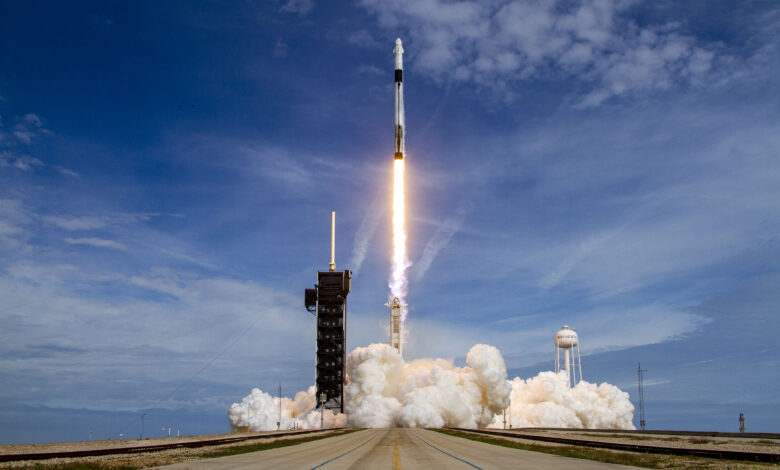The New Frontier: Small Rocket Companies Making Big Waves

The rise of small rocket companies marks a new era in the space industry. These emerging space startups are developing innovative mini rocket technology to provide affordable and reliable launch services for small payloads. With advanced propulsion systems and lightweight materials, they aim to revolutionize access to space.
The Rise of Small Rocket Companies
In recent years, several ambitious startups have entered the micro rocket sector. Companies like Rocket Lab, Virgin Orbit, and Relativity Space are building new launch vehicles designed specifically for the small satellite market. Using assembly line manufacturing and 3D printing, they can iterate designs quickly and deliver better economics than older launch systems.
Emerging Space Startups Shaping the Future
These new space companies have raised significant venture capital, allowing them to grow testing and launch facilities. They are hiring top engineering talent to push the envelope on mini rocket technology. The products and services developed today will shape the industry’s future for decades.
Innovations in Mini Rocket Technology
At the leading edge, small rocket companies are innovating with cheaper, reusable engines, lightweight composite materials, and creative payload integration mechanisms. By focusing their efforts entirely on the small payload segment, they can optimize every aspect of the rocket design. This leads to outsized performance and major cost savings.
Advancements in Mini Rocket Technology
Innovative Small Spacecraft Launchers
Startups are pioneering new launch vehicles like the Neutron rocket by Rocket Lab. It features a reusable first stage and streamlined manufacturing. The Neutron rocket aims to service satellite mega-constellations in low Earth orbit. Creative designs like this provide the foundation for the next generation of micro rocket technology.
Innovative propulsion systems are also being tested. Relativity Space is iterating quickly with in-house 3D-printed engines. Their Aeon engine incorporates the latest advancements in metallurgy and combustion modeling to achieve new performance benchmarks. These innovations will continue as small rocket companies compete for market share.
The Market Dynamics of Small Rocket Companies
Market Analysis of Small Rocket Industry
In recent years, the small satellite launch market has taken off. SpaceX alone aims to launch 30,000 satellites to power its Starlink broadband constellation. Other companies have similar ambitions to deploy telecommunications and Earth observation networks. This has led to surging demand and available business for small rocket launch providers.
Industry reports forecast this segment growing at 13% compound annual growth rates in the years ahead. Launch capacity and revenue are all projected to rise substantially thanks to small rocket technology unlocking the small satellite revolution.
Small Rocket Launch Market Growth
In absolute terms, the small launch vehicle industry is forecast to be worth $13.9 billion annually by 2030. Sub-segments like the reusable rocket and shared launch markets exhibit even stronger growth, upwards of 20% annually. With the market becoming more crowded, leaders will emerge by offering innovations in production, launch readiness, payload capacity, and other critical areas.
The Role of Small Rockets in Modern Space Missions
Role of Small Rockets in Space Missions
Small launch vehicles are carving roles in missions traditionally dominated by large rockets. Thanks to their size and economics, small rockets can provide rapid and regular access to space for satellites headed to low Earth orbit, sun-synchronous orbit, or destined for interplanetary trajectories.
Increasingly, small rockets are being chosen as the preferred launch method for constellations of small satellites. The form factor and costs match well. Small rockets also support technological development by providing an affordable test bed for innovators to trial space hardware.
Low-Orbit Satellite Launch Services
A major segment where micro rockets find a niche is delivering batches of satellites to low Earth orbit, especially to altitudes between 180 km and 1,200 km. This region sees massive investment in telecommunications constellations by companies like SpaceX, OneWeb, and Amazon. Dedicated small launch vehicles are necessary to deploy individual nodes in these networks rapidly.
New Players in the Space Exploration Arena
New Players in Space Exploration
The development of small rockets has opened space access to an entirely new company category. Startups that previously found the cost of large rocket programs daunting are now building viable business cases thanks to smaller, less expensive launchers. This wave of new players is driving innovation across the whole supply chain.
Space Exploration Startups to Watch
Young companies to watch include SpinLaunch, which uses a kinetic launch system to deliver payloads to orbit. Their approach skips traditional rockets in favor of a tuned mass accelerator design. Other interesting companies include Dawn Aerospace, Aevum, and HyImpulse Technologies. Each is putting unique spins on the access to space problem that was unthinkable just a few years ago.
Revolutionizing Space Access with Small Launch Vehicles
Affordable Space Launches
High launch costs have traditionally been one of the biggest restraints on innovation in the space industry. Small rocket companies are revolutionizing this by offering rapid production, unlimited launch rates, and much lower costs. Companies like Rocket Lab can launch payloads for less than $10 million, while SpaceX sometimes advertises flights for as little as $1 million. This level of affordability opens up experimentation.
Low-Cost Rocket Companies
Other launch providers targeting bargain rates include Virgin Orbit, Astra, Firefly Aerospace, and Vector Space Systems. By optimizing for streamlined operations and lean teams, they avoid unnecessary costs passed down to small satellite operators. Some companies even propose shared ride models where payloads split launches, reducing individual ticket prices.
Challenges and Opportunities in the Sector
Challenges Facing Small Rocket Companies
Although the potential market size is substantial, small rocket companies must overcome non-trivial obstacles related to funding, technology risk, regulations, and infrastructure limitations. Additionally, the market is becoming highly competitive with dozens of entrants and concepts. Standing out requires creative vision, solid execution, and talented teams. Survivors will need to establish defendable niches.
Investment Opportunities in Mini Rocket Startups
At the same time, the small rocket sector offers almost boundless opportunities in what promises to be a high-growth industry for decades to come. Successful companies have already generated substantial returns for early investors. And the industry remains top-heavy, with more capital chasing fewer obvious leaders. For savvy investors, now is the ideal time to evaluate new approaches from promising startups before valuations stretch.
The Environmental and Regulatory Considerations
Environmental Impact of Small Rocket Launches
Compared to traditional rockets, the next generation of launch vehicles promises significantly less environmental impact thanks to advances like non-toxic propellants and reusable booster stages. Smaller vehicle sizes also reduce necessary fuel loads and waste. Companies are even studying solar thermal and electric-propelled spacecraft. These innovations lead to cleaner launch systems.
Regulatory Landscape for Small Rocket Launches
However, companies must still navigate complex regulatory requirements imposed by agencies like the FAA, FCC, and EPA. Compliance adds development costs and operational overhead. Streamlined licensing processes adapted to this new category of launch vehicle are needed. Safety is paramount, but new launch vehicles are subjected to certification metrics designed for larger traditional launch systems. Updated standards would accelerate progress.
Satellite Deployment and Nano Satellites
Small Satellite Launchers
Dozens of companies are jockeying to deploy massive constellations of small satellites for communications, Internet of Things connectivity, weather monitoring, and other services. The enormous scale planned for these networks is enabled specifically by the availability of small, cost-effective launch vehicles tailored for tiny payloads. These expanding nanosatellite launch services are necessary for the vision for pervasive space-based data collection and dissemination.
Nano Satellite Launch Services
On the smallest end of the spectrum, miniature CubeSats can weigh as little as 2 or 3 kg and are no larger than a small mailbox. Deploying these nanosatellites requires dedicated launch carriers like the SpaceX rideshare program, Rocket Lab Photon satellite platform, or Virgin Orbit’s LauncherOne, which offer cheap access to orbit a few small satellites at a time.
Collaboration and Global Expansion
Collaborations in the Micro Rocket Industry
No company will address all the challenges facing the wider adoption of small launch vehicles alone. Partnerships are forming between launch providers, propulsion developers, materials vendors, satellite manufacturers, and data analytics companies to jointly drive down costs, shorten development timelines, and accelerate market growth.
These collaborations also help spread risk across multiple organizations. Strategic partnerships have already been credited for progress made in reusable rocket boosters, high-output electric engines, lightweight fuel tanks, and specialized launch facilities. More cooperation is still needed to maximize the promise of this nascent industry.
Global Expansion of Small Rocket Companies
Many leading small launch vehicle companies were founded in the United States or Europe, where early-stage funding is most accessible. However, expansion across Asia, Australia, and the Middle East is picking up steam. As more nations cultivate space-focused entrepreneurs and startup ecosystems, we expect micro rocket innovations tailored to local market needs and applications to appear worldwide.
The Future of the New Space Economy
The Future of Micro Rocket Launches
Industry analysts project that annual nanosatellite launches will grow 400 to 500% over the next decade. Meeting this demand will support dozens of new micro rocket ventures. Through ruthless competition and private investment, a few dominant small launch vehicle architectures will emerge as the market matures.
The New Space Economy and Its Implications
The wider impacts of affordable and reliable access to space cannot be overstated. Experts compare the potential of space-based infrastructure to the revolutionary effects of steam engines, electricity, and railroad expansions in driving technological and economic growth. The full-scale build-out promises a new space economy where data from low Earth orbit transforms every industry.
Technological Breakthroughs and Design Innovations
Technology Breakthroughs in Small Rocket Design
Behind the scenes, next-generation launch vehicles rely on bleeding-edge technological innovations like precision 3D printed engines, specialized fuel pumps based on liquid cooling principles, and intelligent sensor suites to optimize real-time flight performance. Breakthroughs like reusable cryogenic tanks, in-space rocket refueling, single-stage-orbit propulsion, and other advances could become reality thanks to the fertile testing ground created by small launch platforms.
Suborbital Rocket Companies Innovating Design
In related sectors, suborbital rockets capable of delivering small payloads to the boundary of space are seeing their renaissance. Dozens of companies are iterating on designs for high-altitude rocket-powered aircraft and other transit mechanisms for brief microgravity experimentation and testing. These suborbital launch vehicles further expand access to near-space conditions.
The Expanding Reach of Orbital Launch Providers
Orbital Launch Providers
A batch of slightly larger launch vehicles occupies a middle category between massive, expensive traditional rockets and tiny micro launchers. These intermediate orbital providers also cater to small satellite networks and support roles in cargo resupply missions to the ISS or Lunar Gateway station. As those platforms grow, we should expect segment share growth for intermediate launch vehicle companies like Northrop Grumman, Blue Origin, and United Launch Alliance.
Small Payload Launchers
This middle category is also where reusable launch vehicles like SpaceX Falcon 9 and Electron Rocket find a niche deploying larger small satellites. The economics can work for bigger small satellites in the 500 kg range when multiple units can be launched across shared rides. This market portion may attract newer companies since payload capacities exceed tiny nanosatellite launchers.
Conclusion: The Impact of Small Rocket Companies
In summary, the rise of small rocket companies democratizes access to space by providing dedicated, reliable, and affordable launch capabilities tailored for the modern small satellite industry. Their emergence unleashes innovation across the value chain, enabling new data services and scientific use cases. It ultimately opens the solar system for exploration and economic activity. The promising micro rocket launch segment faces challenges but is positioned for significant growth in the years ahead.




